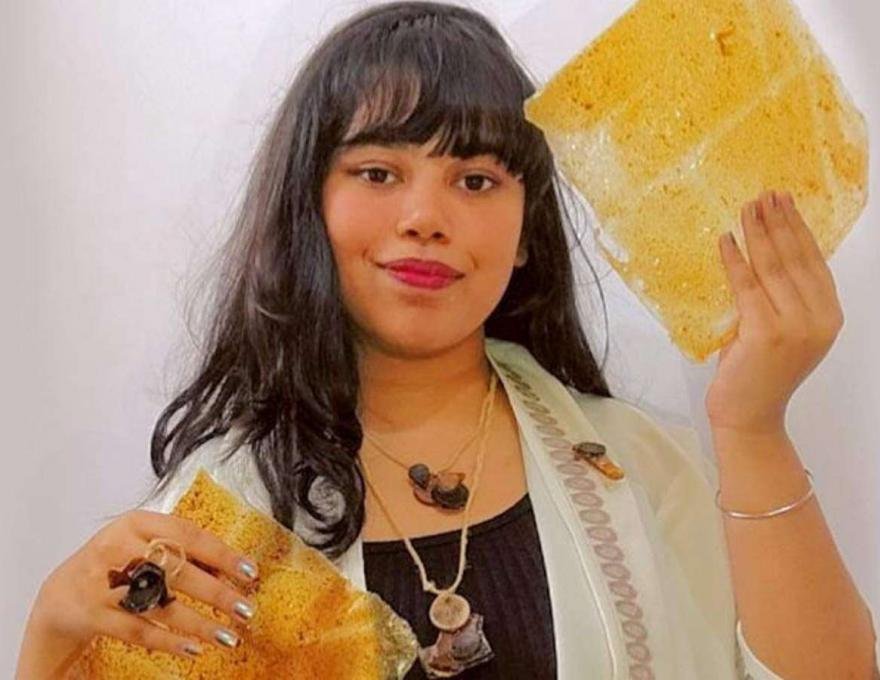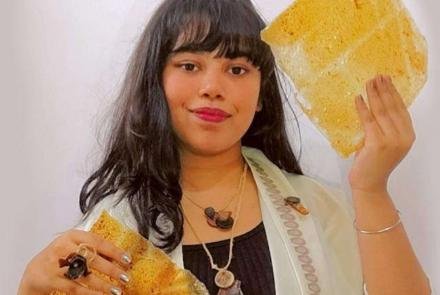Namya Parikh (21), a third-year student of Pearl Academy’s School of Design, Delhi, has innovated a biomaterial in her home kitchen that could be a game-changer in the fashion industry.
With clothing and textiles releasing 1.2 billion tonnes of greenhouse gases every year, finding quick sustainable solutions is key. Namya Parikh (21), a third-year student of Pearl Academy’s School of Design, Delhi, has innovated a biomaterial in her home kitchen that could be a game-changer in the fashion industry.
“The material is made using dried lemon and orange peels and bonded together with agar agar powder. The material is versatile and can be used for making buttons and dry packaging material,” says Namya.
Now, she is collaborating with an alumnus from her academy who is a fashion designer, to make accessories like earrings, necklaces and belts from the same material.
A lockdown project
In August 2020, Namya who is pursuing a Product Industrial Design course was given the assignment to find sustainable alternatives similar to ‘bio leather’.
“Since we were studying remotely, the task was to observe the waste elements generated in the kitchen and innovate something from that,” recalls Namya.
At first, she considered working with ingredients such as eggshells, vegetable or banana peels and binding them with cornstarch or potato starch. But they were not feasible. The end product, she says, was either too thick, too brittle or not flexible enough.
“Finally, I settled on using citrus peels of lemon and orange. I used agar agar, a plant-based gelatin, as the binding agent. After three weeks of trial and error, I got the right formula and made a flexible yet sturdy material. When it is in a wet form, it could be poured into moulds to make different shapes too,” says Namya.
The process of making the bio sheets involved grinding and drying the peels under the sun and then binding them with agar-agar. The mix was spread out as thin sheets and air-dried for several hours. This can be used for wrapping gifts.
“For packing gifts, I did not need to use sellotape or glue. I just had to brush a little water on the bio sheet and the ends would stick together,” says Namya.
By tweaking the formula a little, Namya made a mix that was sturdier in texture and could be moulded into small buttons.
To check its biodegradability, she buried the material in an open ground near her home. With rains overnight, the packaging dissolved completely. Since it was made using lemon and orange peels, Namya claims it would be beneficial to improve soil fertility too.
Not only has she received praise from her teachers for her sustainable innovation, but Namya is also collaborating with an alumnus of Pearl Academy who is working as an independent fashion designer. The duo is developing jewellery using bio sheets and jute. However, this is still in progress and the final versions will be revealed at the end of August.
- Shadipur, New Delhi , Delhi
- https://www.behance.net/namyaparikh





Add new comment